DOMINICAN REPUBLIC - Scouting Trip Report - June 2015
© 2015 Callyn Yorke
Las Terrenas
Isla Las Ballenas, Peninsula de Samana, Dominican Republic 24 June 2015

© 2015 Callyn Yorke
Map showing survey locations in Las Terrenas and vicinity, Samana Peninsula, northeastern Dominican Republic

© 2014 Lonely Planet
Playa Bonita Samana Peninsula, Dominican Republic 19 June 2015
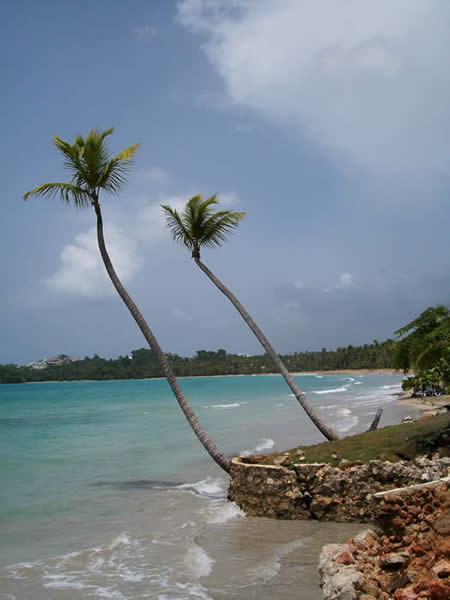
© 2015 Merissa Mendez
June 17-27, 2015
We spent nearly the entire day of Wednesday, June 17, in transit from Rancho Don Cesar, Pariaso in the Southwestern province, to Las Terrenas on the northeastern Samana Peninsula. The journey involved two private auto transfers (Rancho Don Cesar to Barahona; Sanchez to Las Terrenas) and two cross-country bus rides (Barahona to Santo Domingo; SD to Sanchez). Barahona Tours and their affiliate, DomRep Tours, arranged our overland itinerary and hotel bookings a week earlier in Santo Domingo.
All legs of the journey went fairly smoothly, aside from some confusion surrounding our bus connection in the busy Caribe Tour bus terminal in Santo Domingo. There, no one seemed to know which of the many buses in the loading bays would be the one to Sanchez. About two minutes before the scheduled time of departure, there were a few shouts in Spanish, hand-waving officials and some panicked passengers scurrying to board a bus that had just pulled in. I watched from a window seat to be sure our luggage stayed with our bus. Three minutes later we were rolling out of the station, grateful to have made the correct connection. Once we were out of the congestion of Santo Domingo, our express bus rocked and rolled northward on a relatively new four-lane freeway toward the Samana Peninsula.
A driver with a SUV was waiting for us when we arrived in Sanchez. The winding mountain road between Sanchez and Las Terrenas was evidently too narrow and steep for large busses. It was slow-going drive on wet roads but provided glimpses of authentic rural village life -- colorful stucco and wooden shacks surrounded by citrus and banana trees, children playing in yards; skinny dogs sniffing smoldering trash and wary chickens crossing the road. Once atop the main ridge, the picturesque coastline appeared as a refreshing change of scenery and local climate. On the northern, downhill side, the rain-drenched highlands gave way to the relatively dry coastal shrubland and coconut palms. Unfortunately, neither elevation had much natural vegetation left and nearly all of the land appeared largely devoid of birds and other wildlife.
Late that afternoon, we checked into a virtually empty beach hotel called Albachiara. June was apparently off-season and many small businesses were closed. The bartender and staff were delighted to see us and greeted us with industrial strength rum cocktails. A pair of flags, Saudi and American, flapped on a tall poll at the entrance. A private beach and coral reef were across the street. DomRep tours said we would like the place and they weren't wrong. We were given a ground floor luxury suite with a fully equipped kitchen, livingroom, patio, bedroom and spacious bath -- all for about half the high season rate.
Las Terrenas had a distinctly international flair. The Albacharia manager was Italian. The rental car guy was German. The dive shop owner, French. The workers and many pedestrians, mostly Haitian. An attractive young couple we met on the beach was vacationing with her father, a British ambassador. The postcard-perfect beach, paralleling the main road through town, had a line of funky little restaurant-bars featuring a dog with one eye we named Wink. Each evening we enjoyed surreal sunsets and some of the finest European-style cuisine we experienced in the DR. In stark contrast with Santo Domingo and Barahona, common flotsam and litter such as plastic soda bottles, broken sandals, bloated dog carcasses,etc. were largely missing. The beaches were pristine; the water clear, calm and about 80F. It was easy to understand why so many retired foreigners had chosen Las Terrenas as their permanent home.
Hotel Albachiara, Las Terrenas, DR 19 June 2015

© 2015 Callyn Yorke
Of course, there were some challenges to life in Las Terrenas. We found the only economical way to get around in the area was to rent a vehicle. We were decidely uncomfortable with that choice. Like Santo Domingo, there appeared to be no rules. Utter chaos prevailed. Cars, motorbikes, scooters, quads and pedestrians dodged in and out of the heavy morning and evening traffic as though they would be late for Fiesta del Chivo. Taxis (including scooters and motorbikes) were outrageously expensive: A fifteen minute trip to a nearby village cost a minimum of US $30. We settled for a rental quad at $35 per day, including a worthless insurance policy, and joined the mayhem.
Actually, once underway, we learned to weave in and out of traffic as in a sort of dynamic rushing river. Everyone seemed to get out of our way at the right instant, tailgated excessively, yet managed to get to their destination without incident. We wore our helmets religiously, sometimes forgetting to remove them when walking on the street. Just going to and from the market was an adventure equivalent to some of the wildest amusement park rides I remember as a kid in California. Two days after our arrival the police set up random checkpoints, pulling over folks without helmets and whatever else they noticed was wrong. This was a surprise. Helmeted motorcycle riders in Santo Domingo were about as common as cars without dents. Las Terrenas was at least trying to appear civilized. We grew quite fond of the wacky, makeshift little town.
Fishing boat rolled onshore in Las Terrenas 18 June 2015
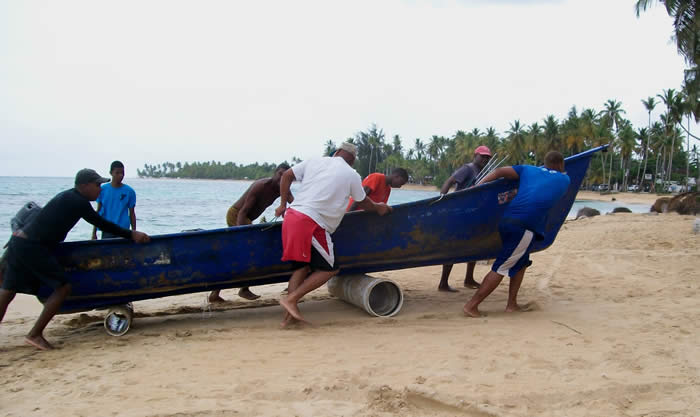
© 2015 Merissa Mendez
Mid-day was the best time to explore the town. It was too hot and humid for most of the locals to remain active. Trouble was, I was usually sound asleep at that time as well. The quad seat was hot enough to fry an egg. But at least the traffic was light. Early mornings were best for exploring marginal areas. I was usually up at dawn looking for a new birding site at the edge of town. Good birding areas were were few and far between in Las Terrenas.
Eventually, I wandered onto some vacant property between Las Terrenas and Playa Bonita, where there was a fairly dense patch of natural mangrove forest mixed with regenerating broad-leaved rainforest. Most of the birdlife (and mosquitoes) of Las Terrenas appeared to be holding on to that small patch of habitat.
A remnant of the native coastal forest on the outskirts of Las Terrenas, DR 23 June 2015
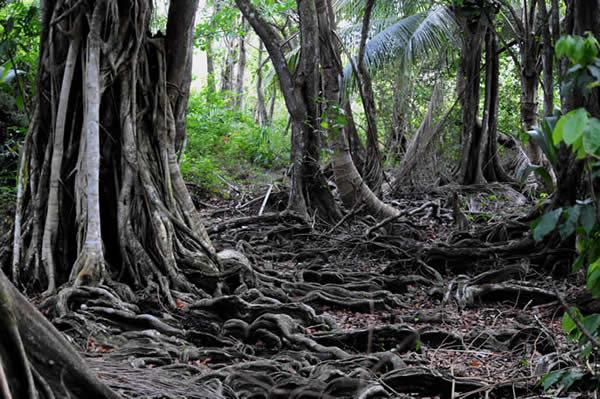
© 2015 Callyn Yorke
Outer edge of Las Terrenas at mid-day, Samana Peninsula, northeastern Dominican Republic 19 June 2015
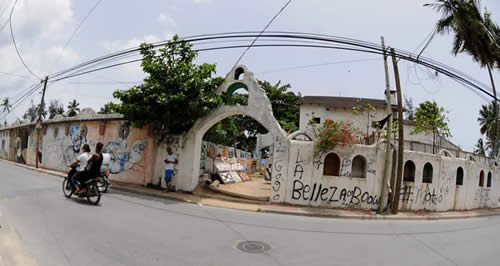
© 2015 Callyn Yorke
Las Terrenas, though largely devoid of birdlife, offered some alternative forms of amusement. A local dive shop took Merissa and I, together with a few Scuba divers, about a mile offshore to Isla Ballenas (Island of the Whales - presumably a namesake for the wintering Humpback Whales) for a combo-snorkelling and diving excursion. I had chosen to leave all of my dive equipment home for the DR trip, mainly because there were no encouraging dive reports to be found on the internet. The general consensus amongst international Scuba divers was that the DR offered only mediocre diving even at the best sites. What's more, I was incurably biased by a fabulous dive trip to Sulawesi, Indonesia the previous summer.
Actually, Isla Ballenas was a cluster of small, raised coral islets with very little soil and vegetation. Diving was reportedly good but snorkelling was poor, due to the choppiness and strong currents around the island. Within 10 minutes Merissa and I were swimming back trying to hold onto the rear ladder of the wildly pitching boat. Water visibility was 30 ft. or more to a sandy bottom, but there were very few fish and/or sea life to be seen, especially in comparison with the Mexican Caribbean (e.g. Cozumel). What did grab my attention was a vocal colony of noddies and terns on the rocky corraline islands. Initially I was unable to identify them to species. Yet, even without my binocular I could see that these were relatively uncommon birds in the region and worthy of a second trip out here.
A few days later, I arranged to return to Isla Ballenas with my binocular and DSLR camera for the purpose of photographing and establishing the specific identity of the birds on the island. While several divers searched the undersea around the islands, our boat captain took me around the small group of islets so that I could get close enough for good photos. That worked out quite well. Brown Noddy and Bridled Tern were then easily identified and the only two species on the island; the former outnumbering the latter about 2:1.
Individuals and pairs of both species were flying low over the sea around our boat, occasionally plunging into the water in an attempt to capture minnows near the surface. Few birds were successful at this, though none seemed to be bothered by me hunting them from the boat with my camera and telephoto lens.
Brown Noddy (Anous stolidus) Isla Ballenas, Samana Peninsula, Dominican Republic 24 June 2015
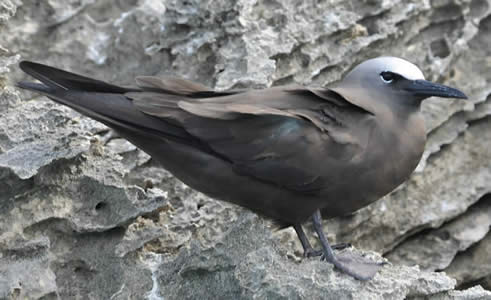
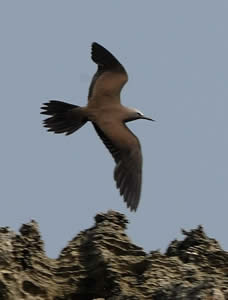
© 2015 Callyn Yorke
Bridled Tern (Onychoprion anaethetus) Isla Ballenas, Samana Peninsula, Dominican Republic 24 June 2015
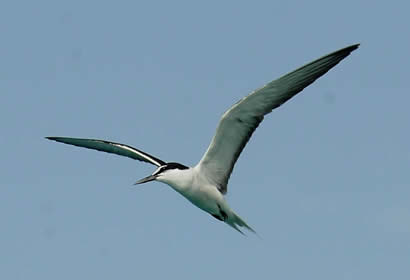
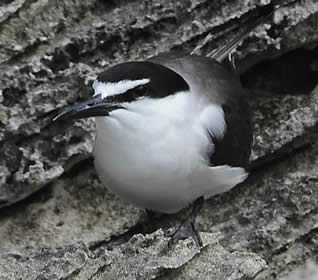
© 2015 Callyn Yorke
The day before we left in Las Terrenas for Santo Domingo, was dedicated to water sports. We chose Playa Bonita, which was a fifteen minute quad ride from Las Terrenas and one of the finest beaches in the area. This was the only nearby beach with surfable waves (1-2 ft.). I rented a longboard from a local surf shop ($20 for 2 hours) and paddled out a short distance from shore. Merissa grabbed a boogie board and rode the inside white water. A British couple joined us for a jolly good day of sun and sand. The air temperature hit the high 80's by 12 noon; the water felt like a warm bath around 85F. All of us left Playa Bonita a couple of shades darker than the day we arrived.
The author in Playa Bonita 22 June 2015
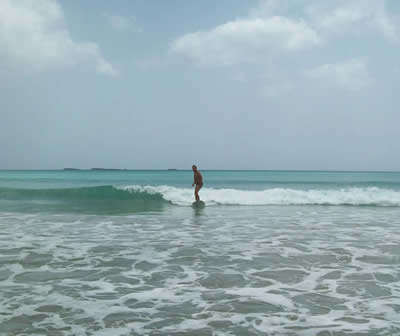
© 2015 Merissa Mendez
The author, Las Terrenas, Samana Peninsula, Dominican Republic 17 June 2015
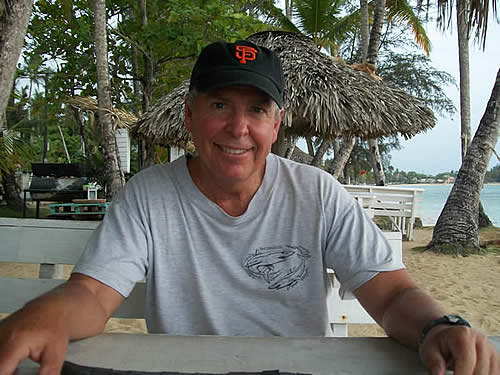
© 2015 Merissa Mendez